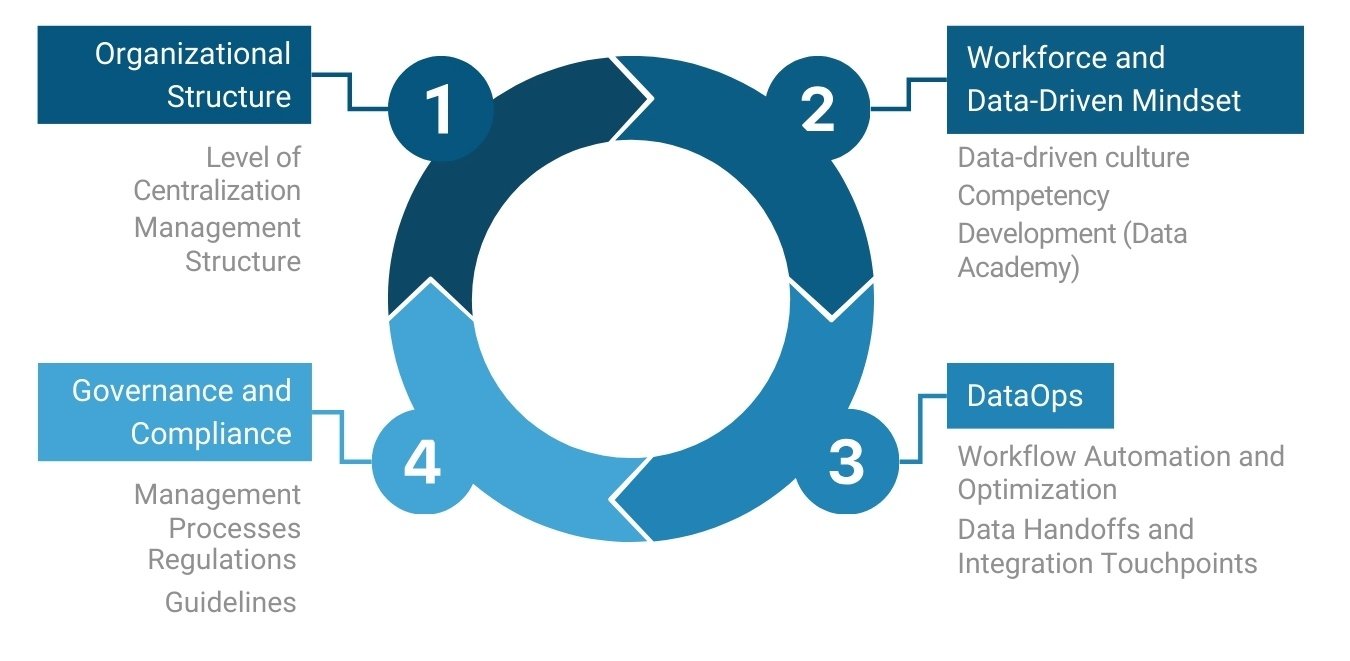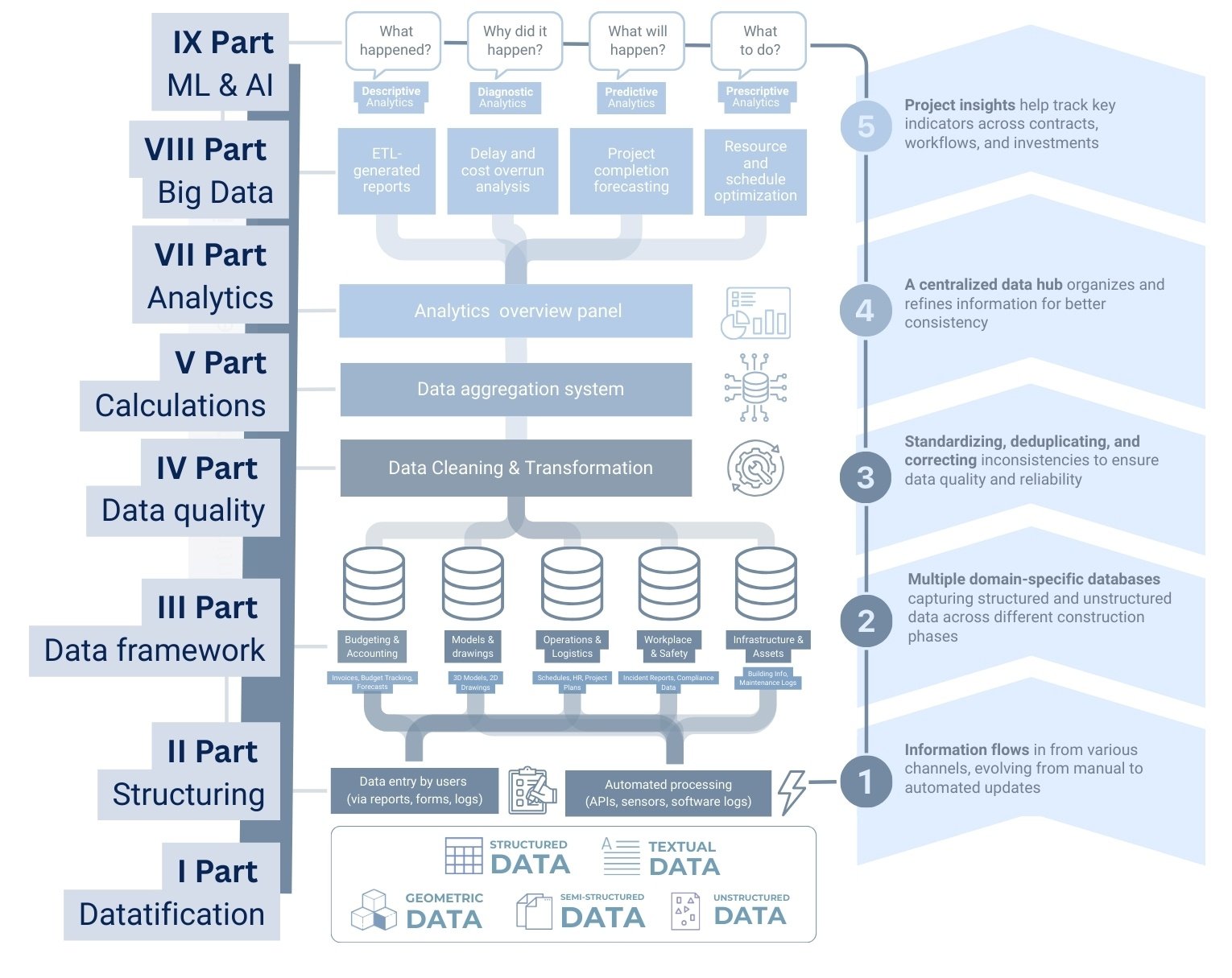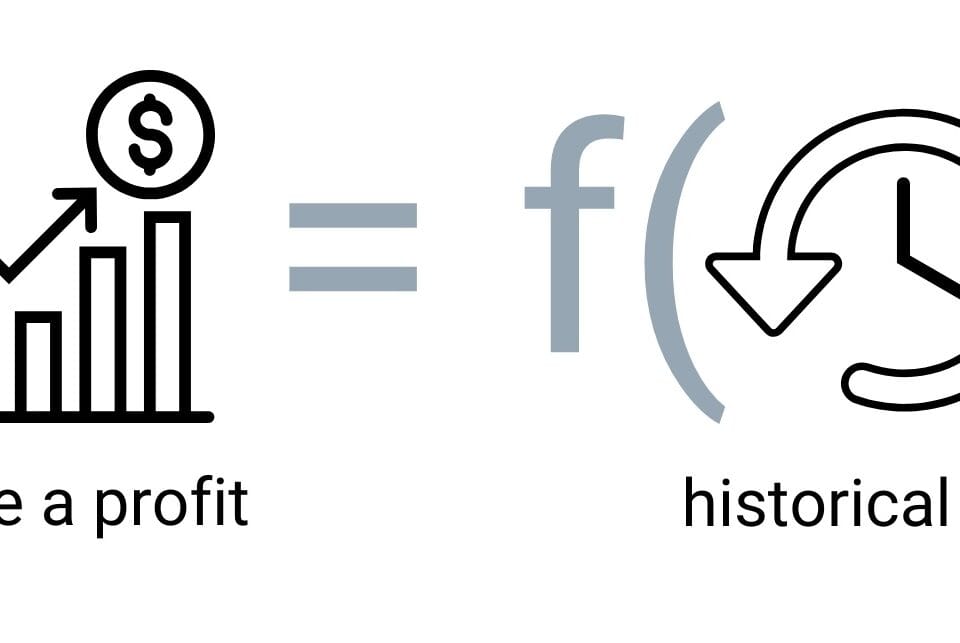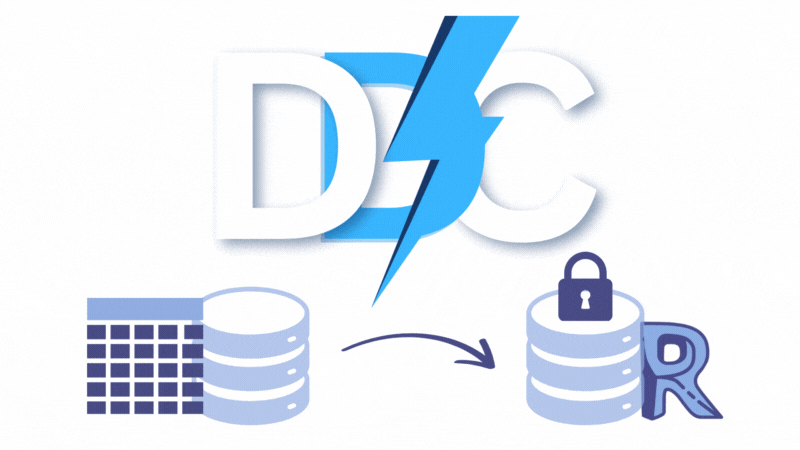The following plan can serve as an initial benchmark – a starting point for shaping your own data-driven digital transformation strategy:
- Audit and standards: analyze current state, unify data
- Data structuring and classification: automate the transformation of unstructured and loosely structured data
- Automate groupings, calculations and calculations: use open source tools and libraries for automation
- Ecosystem and COE: build an internal team to form a unified data ecosystem in the company
- Culture and learning: move away from HiPPO -solutions to data-driven solutions
- Pilots, feedback and scaling: act iteratively: test new methods on a limited scale, gather valid feedback and gradually scale solutions
- Open formats: use universal and open formats for independence from software vendors
- Machine learning: embed ML algorithms into processes for prediction and optimization
- IoT and the digital construction site: integrate modern data collection technologies into processes
- Strategic adaptation: prepare for future industry changes
Most importantly, remember that “data alone doesn’t change a company: it’s the people who know how to work with that data that change it”. Emphasize culture, transparent processes, and a commitment to continuous improvement
A systems approach enables a shift from siloed digital initiatives to a full-fledged data-driven management model where decisions are not based on intuition or assumptions, but on data, facts and mathematically calculated probabilities. The digital transformation of the construction industry is not just about adopting technology, but shaping a business ecosystem where project information is transferred seamlessly and iteratively between different systems. In doing so, machine learning algorithms provide automatic, continuous analysis, forecasting and optimization of processes. In such an environment, speculation and hidden data become irrelevant – only proven models, transparent calculations and predictable results remain.

Each part of the book corresponds to a specific stage of data processing and analysis in construction projects (Fig. 2.2-5). If you want to return to one of the topics discussed earlier and look at it from a holistic understanding of the data utilization flow, you can refer to the part titles in Fig. 10.2-4.

Regardless of your organization’s size, level of technology maturity, or budget, you can start moving toward a data-driven approach today. Even small steps in the right direction will produce results over time.
Data-driven transformation is not a one-time project, but a continuous, iterative improvement process that includes implementing new tools, redesigning processes, and developing a culture of data-driven decision-making.


















